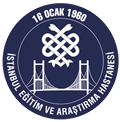ABSTRACT
Introduction:
Nasogastric tube (NGT) placement is a common procedure in pediatric intensive care and requires accurate verification to avoid complications. Traditional methods such as auscultation and radiography pose limitations such as unreliability and radiation exposure. The aim of this study was to confirm the placement of NGT using bedside ultrasonography (USG).
Methods:
A prospective study was conducted in a tertiary pediatric intensive care unit (PICU) using bedside USG to confirm NGT positioning. The study included 46 patients, with procedures ranging from November 2023 to January 2024. Placement confirmation techniques included USG visualization and the air bolus method when necessary.
Results:
All 68 NGT insertions were successfully visualized using USG. The median age of patients was 18 months, with the most common admissions being pneumonia and septic shock. An air bolus was used in 13.2% of the cases to indirectly confirm placement.
Conclusion:
Bedside USG is an effective and safe alternative for confirming NGT placement in the PICU, minimizing the risk of radiation, and leveraging the benefits of immediate and accurate bedside assessment. This method can replace radiography as the new standard for NGT placement confirmation.
Introduction
The nasogastric tube (NGT) has been in use since the 17th-century and was initially used solely for providing nutrition. Currently, NGTs are used for other purposes such as medication administration, stomach decompression, and gastric lavage (1,2). Verifying the placement of the NGT is crucial because accidental insertion into the respiratory tract can carry risks of morbidity and mortality associated with serious complications such as pneumothorax, pneumonia, and death. There have been reports of tube placement errors in children. Here, an error is defined as the placement of the tube in any location other than the desired one (3).
Frequently, auscultation is used to check the placement of a NGT (4). After the NGT is inserted, a stethoscope is placed on the epigastric region of the abdomen, and the placement is confirmed by hearing the pushed air (5). However, this method is not always reliable because similar sounds can be heard even when the tube is misplaced. The appearance and pH value of the aspirate can provide some clues. In the gastric pH test, the pH of the aspirate is checked, and if the pH is below 5.5, the placement of the tube is confirmed (6). However, this may not be definitive in cases where acid-suppressing medication is used. The most reliable method to confirm the position of the NGT, especially in critical or unconscious patients, is considered the “gold standard” and involves abdominal radiography. However, this method also increases radiation exposure (4,7).
Bedside ultrasound has been increasingly used in pediatric intensive care in recent years. In addition to invasive methods such as central venous catheter insertion, evaluation of lung parenchyma, pleural space, abdominal organs, and measurement of cardiac functions can be considered among its usage (8). The use of ultrasonography (USG) for verifying the placement of NGT is increasingly preferred because of its numerous advantages. These include widespread availability, ease of application, ability to perform repeated evaluations, bedside assessment, speed, cost-effectiveness, lack of ionizing radiation exposure, high spatial resolution, and dynamic imaging capabilities. However, there are only a limited number of studies in the literature concerning the verification of NGT placement using USG (9).
In this study, our objective was to determine the placement of NGT in patients using USG in the pedaitric intensive care unit (PICU). By employing this imaging technique, we aim to accurately confirm the position of the tube without exposing the patients to radiation, thereby offering a safer and effective alternative for verification.
Methods
Study Design
This prospective study was conducted in a 24-bed tertiary-level PICU at University of Health Sciences Turkey, Behçet Uz Pediatric Disease and Surgery Training and Research Hospital. The study period spanned from November 15, 2023 to January 15, 2024, encompassing patients undergoing inpatient treatment. NGTs were inserted by pediatricians following a standard protocol.
Methodology
Before NGT insertion, the distance from the tip of the patient’s nose to the earlobe and from the earlobe to the midpoint between the xiphoid process and the umbilicus (the nose-ear-mid-umbilicus method) was meticulously measured (10). Post-insertion, each patient underwent an ultrasound examination by a certified pediatric intensive care fellow. A Philips HD15 ultrasound machine (Philips, Eindhoven, Netherlands), fitted with a 3-12 MHz linear probe, was employed for the imaging procedure. The positioning of the NGT was initially determined via ultrasound, followed by confirmation through abdominal radiography and/or auscultation. Radiological imaging was exclusively applied in cases where clinical necessity extended beyond the mere confirmation of NGT placement. Such imaging was performed only when clinicians identified additional diagnostic requirements, separate from the verification of NGT positioning.
Ultrasound Examination
NGT was visualized using longitudinal and angled scans of the epigastrium. In cases where ultrasound examination did not conclusively confirm NGT placement, an air bolus was administered through the NGT using a syringe. The dynamic observation of air movement within the stomach conclusively verified the correct placement of the NGT.
Ethical Statemnet
The study was approved by the Clinical Research Ethical Committee of University of Health Sciences Turkey, Behçet Uz Pediatric Disease and Surgery Training and Research Hospital (approval number: 2023/16-05, date: 09.11.2023). Informed consent was obtained from the families of patients participating in the study.
Statistical Analysis
For the data analysis, SPSS 20.0 software was used. The conformity of the data to a normal distribution was assessed using the Shapiro-Wilk test. The ages of the patients and their Pediatric Index of Mortality 3 scores are presented as the median, ranging from the 25th to 75th percentile (Q25-Q75).
Results
A total of 68 procedures were performed on 46 patients admitted to the PICU. The median age of the patients was 18 months (Q25-Q75: 13-48). Pneumonia was the most common diagnosis requiring intensive care, followed by septic shock (Table 1). Fourteen of all patients underwent tracheostomy. Twenty-two patients were orotracheally intubated and were receiving mechanical ventilator support.
Out of the total procedures performed, in 59 cases, which accounts for 86.7%, the placement of the NGT was directly visualized using USG (Figure 1). In nine of these procedures, visualization required the injection of an air bolus into the NGT. In cases where direct visualization of NGT placement was not initially possible, the air injection technique enabled confirmation. Such scenarios where indirect methods were required accounted for 13.2% of the total procedures performed in our study. This technique was particularly useful in cases where direct visualization of NGT placement was challenging or unclear. The introduction of the air bolus into the NGT enhanced the ability of USG to confirm correct tube placement, thereby enhancing the safety and reliability of the procedure. Thus, the NGT location could be confirmed using bedside USG in each procedure in the study.
Discussion
This study aimed to validate the positioning of NGT in critically ill pediatric patients using bedside USG. USG is a non-invasive and radiation-free method, in contrast to the traditional gold standard of direct radiographic imaging (8,11). Direct radiography is preferred for definitive confirmation of NGT placement; however, this method involves a risk of repeated radiation exposure, particularly in the pediatric population. USG could be an alternative that eliminates this risk while providing quick and accurate results.
The primary finding of our study was the accurate demonstration of NGT placement in all applications. Thanks to a special USG device used in the intensive care unit, the procedure was performed without loss of time or additional workforce. Since the team placing and imaging the NGT was the same, there was no need for radiologists or radiology technicians, thus saving both labor and time. In a study conducted in pediatric intensive care, all NGTs placed were verified by a radiology expert using bedside USG. Although the results in our study were similar, itis important to note that the verifier using USG was a pediatric intensive care specialist.
In all nine procedures (13.2%), it was necessary to inject air into the NGT to confirm its placement. If the NGT is not directly observable, injecting an air bolus and observing it with USG is an effective method. This air bolus application was particularly useful in cases where air artifacts were observed (12).
In a pediatric intensive care study with 21 patients, all NGTs were visible by ultrasound, achieving 100% sensitivity and without the need for air or saline injection (10). However, in our study, although we could visualize all NGTs, air injection was necessary in 13.2% of cases to confirm placement. This suggests variability in the NGT visualization techniques, even with high success rates. Furthermore, a review of pediatric and neonatal studies reported a sensitivity range of 88% to 98.1% for NGT confirmation, and a meta-analysis in adults showed a sensitivity of 93% and specificity of 97%, indicating effectiveness in confirming correct placements (13,14).
This study supports the adoption of USG as a new standard for detecting NGT placement in children, replacing the gold standard of radiography. This method can avoid unnecessary exposure of patients to X-rays. Additionally, USG imaging, which is low-cost and conducted by the treating physician, saves both labor and time, enhancing efficiency. However, although our study identified all NGT placements, previous studies have shown variable results, indicating that the outcome may not be as definitive as radiography.
Study Limitations
Limitations of the study include its single-center nature and the fact that the procedure was performed by intensive care specialists experienced in USG. In addition, the absence of any mispositioned NGT attempts in the study is another limitation. We believe that it is important to demonstrate the sustainability and consistency of this technique through multicenter studies conducted not only by experienced pediatric intensive care specialists but also by pediatricians.
Conclusion
This study offers an alternative approach to traditional radiographic methods by examining the validation of NGT placement in the pediatric intensive care setting using USG. USG has been found to be effective in determining the correct placement of NGTs without radiation exposure. Future studies conducted by physicians with varying experiences in different centers will be beneficial to demonstrate the feasibility of this method.



